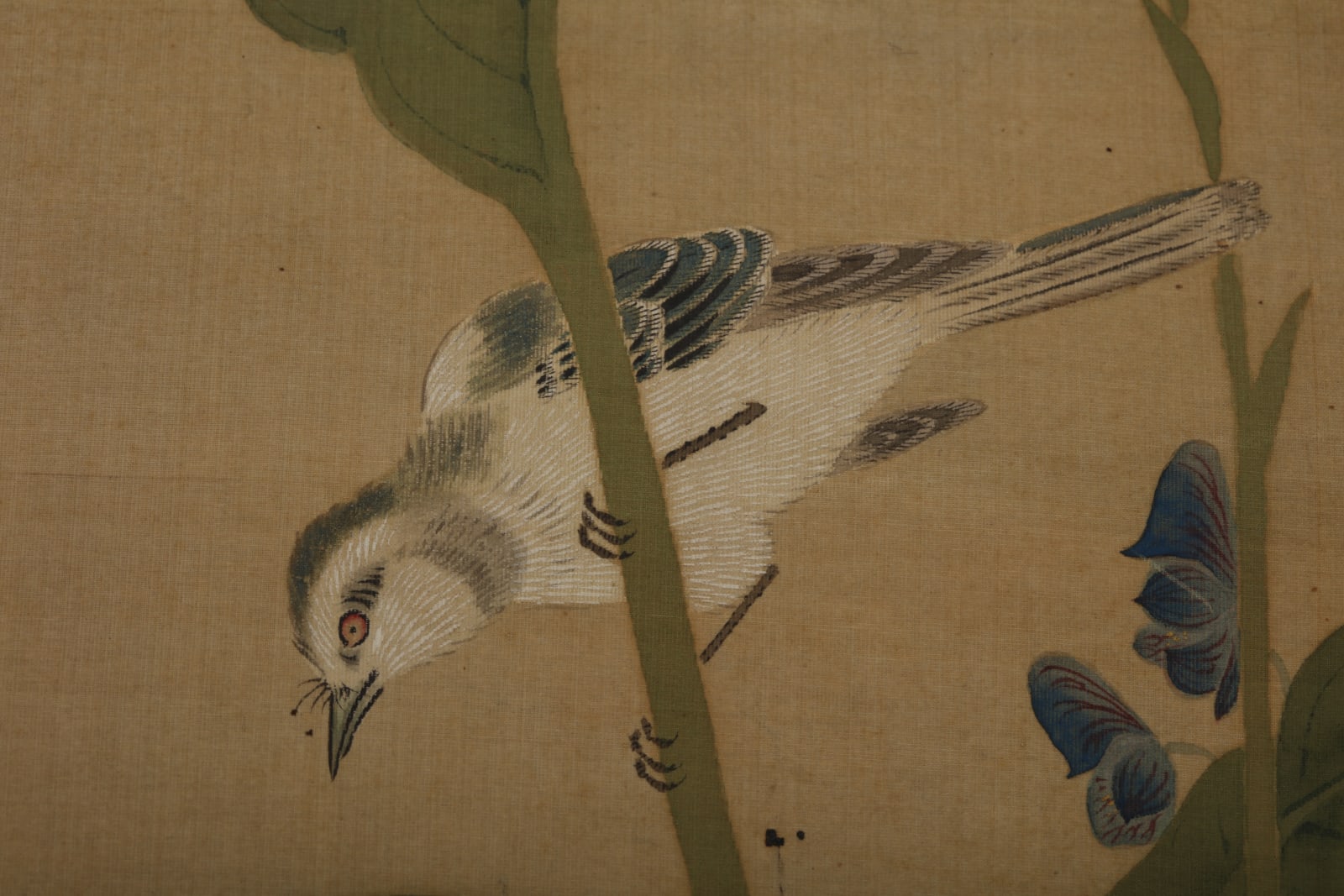Yokoi Hei Jishiki
Bird and Canna Indica, ca 1800
Hanging scroll; ink, mineral colors and shell powder on silk
Overall size 66¼ x 16¼ in. (168.5 x 41.5 cm)
Image size 33¾ x 11½ in. (86 x 29.5 cm)
Image size 33¾ x 11½ in. (86 x 29.5 cm)
T-4723
Further images
Signed at upper left Boshi chūka Hei Jishiki sha (Painted by Hei Jishiki [Chinese: Ping Shishi] in midsummer of the boshi year) and with two seals, the first Hei Jishiki...
Signed at upper left Boshi chūka Hei Jishiki sha (Painted by Hei Jishiki [Chinese: Ping Shishi] in midsummer of the boshi year) and with two seals, the first Hei Jishiki in (Seal of Hei Jishiki [Ping Shishi]), the second Ri Giritsu [Chinese: Li Yili]
Comes with the original wood tomobako storage box inscribed outside Kara-e dandoku ni tori (Chinese-style painting of a canna and bird) and Owari Yokoi Dayū Hei Jishiki hitsu (Brushed by Hei Jishiki, Steward of Owari (Province), Yokoi, and with a paper label inscribed Yokoi Hei Jishiki kachō no zu (Bird-and-flower painting by Yokoi Hei Jishiki)
This accomplished composition is a fine example of a type of Chinese-looking bird-and-flower painting that was widely practiced in Japan during the latter part of the Edo period (1615-1868). Originally introduced to Japan by a Chinese artist, Shen Nanpin (Japanese: Chin Nanpin), who resided in the port town of Nagasaki from 1731 to 1733, the style was subsequently reinforced by other visiting Chinese painters. Like other painters in the Shen Nanpin tradition, Hei Jishiki, of whom no record has so far been found (beyond one other work recently offered online), seems to have assumed more than one Chinese-looking name, as seen in the seals on the present scroll.
According to the inscription on the storage box for this scroll, in his purely Japanese persona the artist was a member of the Yokoi, a prominent samurai clan resident in Owari Province, whose most famous member was the scholar, poet, and painter Yokoi Yayū (1702–1783), also known as Tokitsura, with the same first character 時 as Jishiki 時式. It seems plausible, then, that our artist might have been a later member of the same family.
Comes with the original wood tomobako storage box inscribed outside Kara-e dandoku ni tori (Chinese-style painting of a canna and bird) and Owari Yokoi Dayū Hei Jishiki hitsu (Brushed by Hei Jishiki, Steward of Owari (Province), Yokoi, and with a paper label inscribed Yokoi Hei Jishiki kachō no zu (Bird-and-flower painting by Yokoi Hei Jishiki)
This accomplished composition is a fine example of a type of Chinese-looking bird-and-flower painting that was widely practiced in Japan during the latter part of the Edo period (1615-1868). Originally introduced to Japan by a Chinese artist, Shen Nanpin (Japanese: Chin Nanpin), who resided in the port town of Nagasaki from 1731 to 1733, the style was subsequently reinforced by other visiting Chinese painters. Like other painters in the Shen Nanpin tradition, Hei Jishiki, of whom no record has so far been found (beyond one other work recently offered online), seems to have assumed more than one Chinese-looking name, as seen in the seals on the present scroll.
According to the inscription on the storage box for this scroll, in his purely Japanese persona the artist was a member of the Yokoi, a prominent samurai clan resident in Owari Province, whose most famous member was the scholar, poet, and painter Yokoi Yayū (1702–1783), also known as Tokitsura, with the same first character 時 as Jishiki 時式. It seems plausible, then, that our artist might have been a later member of the same family.













